exposed
Showing 121–132 of 135 results
-
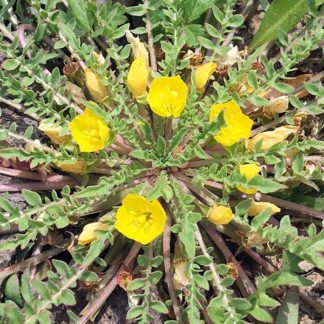
Taraxia tanacetifolia / tansyleaf evening primrose
- single, sessile, bright yellow, cup shaped flowers; 4 petals
- grows as a rosette, flat to the ground
- leaves are up to 12 inches long; very deeply lobed
- still blooming in mid-October; starts in mid summer
- grows on sandy/gravelly soil, e.g. drying lake beds
-

Telesonix heucheriformis / false saxifrage
- alpine or subalpine
- on scree, rock faces, cliffs, in cracks
- glandular, slightly lobed leaves (common for the family)
- teeny red or purple-ish flowers in large-ish clusters
- blooms in August at high altitudes
-

Tetradymia canescens / spineless horsebrush
- shrub - up to 3 feet tall and across; round
- small, yellow composite flowers in clusters of 4 to 8
- dandelion-like seeds often present with flowers
- primary leaves short and linear; long-lived
- secondary leaves in axils of primaries are short-lived
- primary leaves are not spines
-
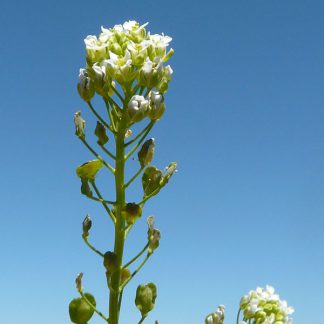
Thlaspi arvense / field pennycress
- inflorescence a raceme with white, teeny flowers
- oval seed pods ca. 1/3" across
- blooms late spring and summer
- continues blooming as pods fill from older flowers
- common weed in disturbed habitats including cultivated land
-

Trifolium repens / white clover
- the quintessential 3-leaf clover
- white flower heads, tinged with pink (perhaps)
- found in full sun with little other specific requirements
- four leaflet leaves bring good luck
-
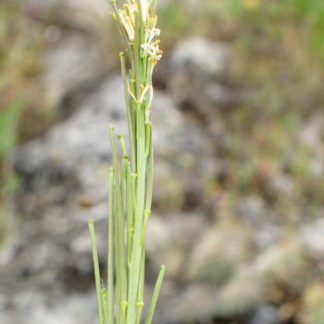
Turritis glabra / tower mustard
- long (3"-ish) stick-like seedpods, erect and hugging the stem
- nondescript mustard-family 4 petalled flowers in a cluster at the top
- tall stem with leaves clasping the stem (no petioles)
- generally in exposed, dry habitats
-
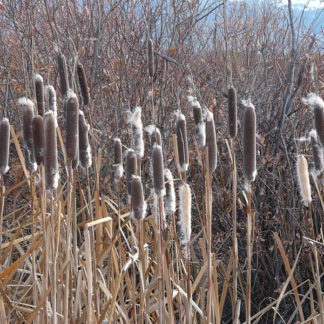
Typha latifolia / cattail
- tall, grass-like with thick, long, flat leaves
- in wet areas, especially streams and stream banks
- inflorescence club-like spike; yellow (male) above, green (female) below
- seed head dark brown club, with bare spike above
- fruits (seeds) white & fluffy, released in late summer, autumn, winter
-
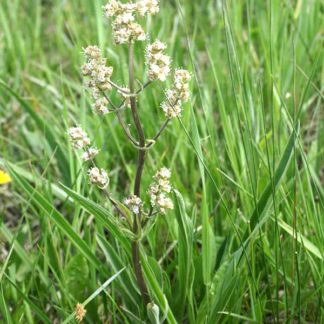
Valeriana edulis / hairy valerian
- long-lived, herbaceous, dioecious perennial - limited to marshes and fens
- grass-like basal leaves; pin-like lobed, stem leaves
- teeny male flowers, white with five fused petals
- sub-millimeter female flowers
- male and female flowers usually on different plants
- overall plant stands out above wetland grasses, rushes etc.
-

Veratrum californicum / California false hellebore
- huge inflorescence covered with one-inch-plus flowers
- six white tepals with green centers
- moist areas, possibly very dense stands
- foot-long, heavily veined, pleated bright green leaves
-

Verbascum thapsus / mullein
- rosette of large, soft, hairy leaves
- small yellow flowers densely packed on a very tall spike
- persistent ugly brown spike after flowering is done
- often on otherwise bare ground
-

Veronica officinalis / heath speedwell
- prostrate, herbaceous perennial
- hairy green stems and leaves (obvious)
- short, erect, spike-like shoots
- ¼" blue/violet flowers
- 4 petals with purple stripes
- gaps and exposed soils
-

Veronica wyomingensis / Wyoming kittentails
- alpine or subalpine (mostly); rocky outcrops
- short
- elliptical leaves with sharp toothed edges
- red/purple many-flowered inflorescence
Showing 121–132 of 135 results